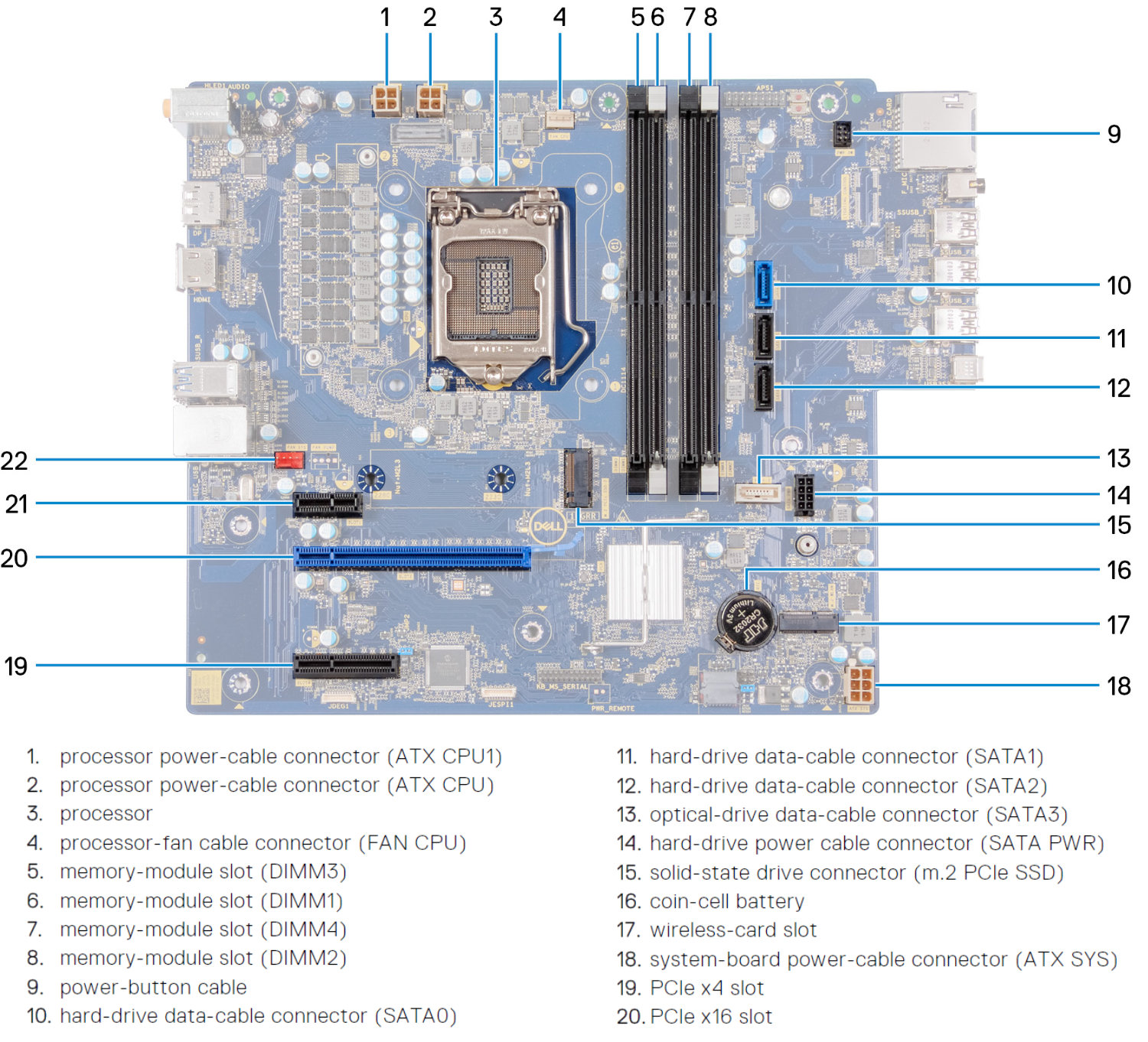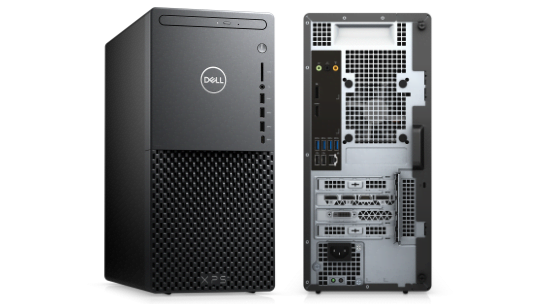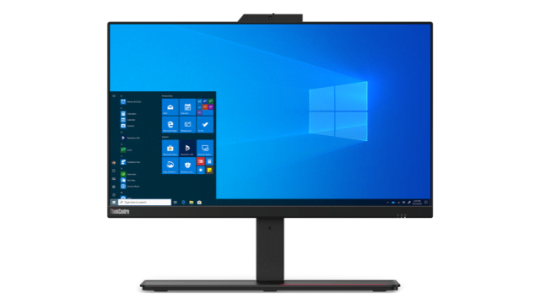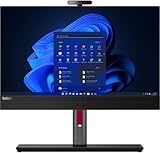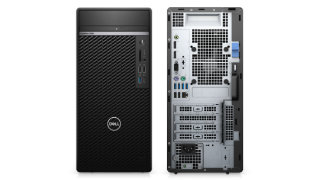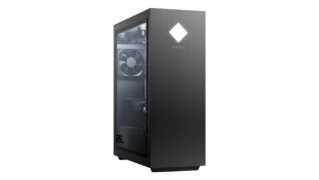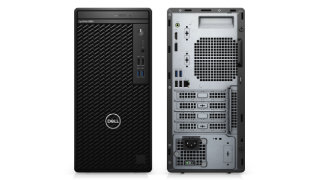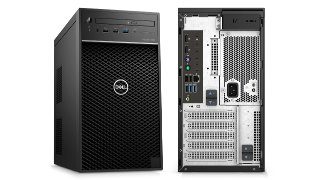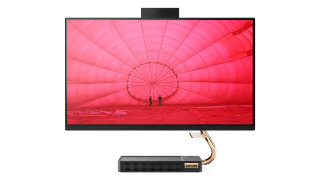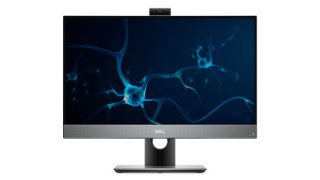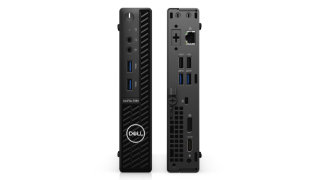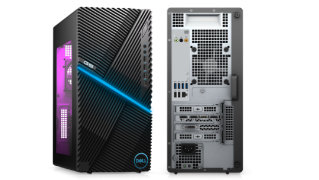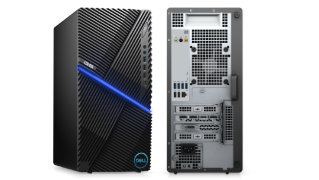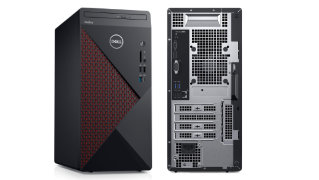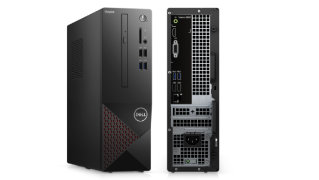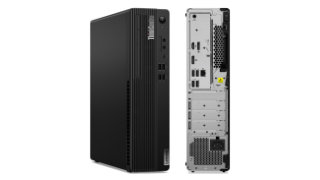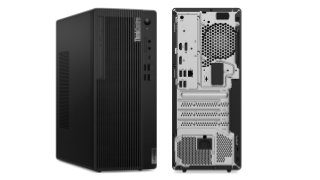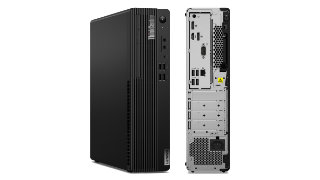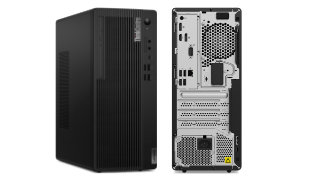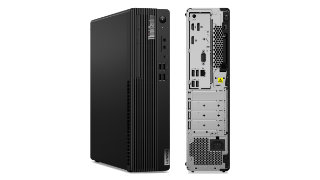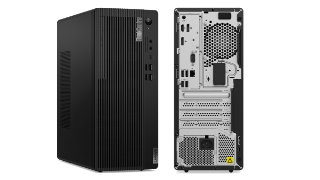Specs Comparison Availability Dell XPS 8940 Desktop Lenovo ThinkCentre M90a Released 2020 2020 Release Info Announced on July 9, 2020 Available from July 9, 2020 Announced on January 07, 2020 (CES 2020). Available starting June 2020. Pricing Starting from $649.99 i3-10100 iGPU No ODD 360W PSU 8GB 1TB 3.5” HDD Wi-Fi 5
Starting at $1,099. Applicable Models 2020 Lenovo ThinkCentre M90a Lenovo ThinkCentre M90a AIO Lenovo ThinkCentre M90a Gen 1 Lenovo ThinkCentre M90a All-in-One Generations
Dell XPS 8940 Tower Desktop Price
Dell XPS 8940 Tower Desktop Computer - 10th Gen Intel Core i5-10400 (6-Core up to 4.3 GHz) CPU, 8GB DDR4 RAM, 256 SSD, GeForce GTX 1660 Super 6GB GDDR6 Graphics, Windows 10, Black
Dell XPS 8940 Desktop Computer - 11th Gen Intel Core i7-11700 up to 4.9GHz CPU, 32GB RAM, 512GB SSD + 2TB HDD, Intel UHD Graphics 750, Killer Wi-Fi 6, 500W PSU, DVD-RW, Windows 10 Pro
2021 Flagship Dell XPS 8940 Gaming Tower Desktop Computer 10th Gen Intel Octa-Core i7-10700 32GB RAM 512GB SSD + 2TB HDD Geforce GTX 1660Ti DisplayPort Wifi6 Bluetooth DVD-RW Win10 (Renewed) Lenovo ThinkCentre M90a AIO Price
Lenovo ThinkCentre M90a 23.8" FHD AIO Business All-in-One Desktop, Intel Octa-Core i7-10700 up to 4.8GHz, 16GB DDR4 RAM, 512GB PCIe SSD, WiFi Adapter, Ethernet, Windows 11 Pro, BROAG Mouse Pad
Lenovo ThinkCentre M90A Gen3 All-in-One Desktop, 23.8" Display, Intel Core i5, 16GB RAM, 256GB SSD, Win11 Pro
Lenovo ThinkCentre M90a Pro Gen 4 Business PC, with Intel Core i5-13500 vPro Processor, 27” Non-Touch, QHD, LED Backlights Display, 16GB RAM, 512GB SSD, IR/RGB Cam, Intel UHD Graphics, and Win 11 Pro
Display Dell XPS 8940 Desktop Lenovo ThinkCentre M90a Size 23.8 Inches Info 23.8” FHD Display 250 nits, non-touch.
23.8” FHD PrivacyGuard Display 350 nits, non-touch.
23.8” FHD Touch Display 250 nits, multi-touch.
All Configurations 1920 x 1080, 16:9, IPS panel, 1000:1 contrast ratio, +/- 89° viewing angle, borderless design, low blue light mode, anti-glare surface.
Exterior Dell XPS 8940 Desktop Lenovo ThinkCentre M90a Size Comparison Dimensions 12.1 x 14.4 x 6.7” (308 x 367 x 169 mm) Without feed
12.1 x 15.5 x 6.7” (308 x 393 x 169 mm) With feed
541 x 200 x 414.2-494.2 mm (21.3 x 7.9 x 16.3-19.5 inches) Models (with full function monitor stand, with ODD, with PrivacyGuard, with camera)
541 x 200 x 414.2-494.2 mm (21.3 x 7.9 x 16.3-19.5 inches) Models (with full function monitor stand, with ODD, without PrivacyGuard, with camera)
541 x 200 x 414.2-494.2 mm (21.3 x 7.9 x 16.3-19.5 inches) Models (with full function monitor stand, without ODD, with PrivacyGuard, with camera)
541 x 200 x 414.2-494.2 mm (21.3 x 7.9 x 16.3-19.5 inches) Models (with full function monitor stand, without ODD, without PrivacyGuard, with camera)
Lowest in flat mode: 541 x 312.8 x 227.4 mm (21.3 x 12.3 x 9.0 inches) Highest in vertical mode: 541 x 232.7 x 467.7 mm (21.3 x 9.2 x 18.4 inches) Models (with UltraFlex IV stand, with ODD, without PrivacyGuard, with camera)
Lowest in flat mode: 541 x 312.8 x 227.4 mm (21.3 x 12.3 x 9.0 inches) Highest in vertical mode: 541 x 232.7 x 467.7 mm (21.3 x 9.2 x 18.4 inches) Models (with UltraFlex IV stand, without ODD, without PrivacyGuard, with camera)
541 x 61.3 x 340.5 mm (21.3 x 2.4 x 13.4 inches) Models (without stand, with ODD, with PrivacyGuard, with camera)
541 x 57.8 x 340.5 mm (21.3 x 2.3 x 13.4 inches) Models (without stand, with ODD, without PrivacyGuard, with camera)
541 x 49.5 x 340.5 mm (21.3 x 1.9 x 13.4 inches) Models (without stand, without ODD, with PrivacyGuard, with camera)
541 x 46 x 340.5 mm (21.3 x 1.8 x 13.4 inches) Models (without stand, without ODD, without PrivacyGuard, with camera)
Weight Starting Weight: 13.89 lb (6.3 kg) 8.71 kg (19.2 lbs) Models (with full function monitor stand, with ODD, with PrivacyGuard, with camera)
7.84 kg (17.3 lbs) Models (with full function monitor stand, with ODD, without PrivacyGuard, with camera)
8.39 kg (18.5 lbs) Models (with full function monitor stand, without ODD, with PrivacyGuard, with camera)
7.51 kg (16.6 lbs) Models (with full function monitor stand, without ODD, without PrivacyGuard, with camera)
8.58 kg (18.9 lbs) Models (with UltraFlex IV stand, with ODD, without PrivacyGuard, with camera)
8.26 kg (18.2 lbs) Models (with UltraFlex IV stand, without ODD, without PrivacyGuard, with camera)
6.45 kg (14.2 lbs) Models (without stand, with ODD, with PrivacyGuard, with camera)
5.57 kg (12.3 lbs) Models (without stand, with ODD, without PrivacyGuard, with camera)
6.13 kg (13.5 lbs) Models (without stand, without ODD, with PrivacyGuard, with camera)
5.25 kg (11.6 lbs) Models (without stand, without ODD, without PrivacyGuard, with camera)
Colors Night Sky
Black
Keyboard and Trackpad Dell Multimedia Keyboard-KB216 Black (English) Dell Wired Mouse Black Keyboard Lenovo Calliope Keyboard (USB connector), black Lenovo Calliope Wireless Keyboard (2.4GHz via USB receiver), black Lenovo Traditional Keyboard (USB connector), black No keyboard Mouse Lenovo Calliope Mouse (USB connector), black Lenovo Calliope Wireless Mouse (2.4GHz via USB receiver), black Lenovo Fingerprint Mouse (USB connector), Windows Hello support, black No mouse Ports Front 1 x USB 3.1 Type-C Gen 1, 3 x USB 3.1 Gen 1 Ports, 1 x Headset jack Rear 4 x USB 3.1 Gen 1 ports 2 x USB 2.0 ports 1 x HDMI 1.4 (UMA graphics only) 1 x Display Port 1.2 (UMA only) 1 x Gigabit Ethernet 1 x Audio port (5.1 channel 3 Jack) Right
Rear
Chasis Dell XPS 8940 Desktop Lenovo ThinkCentre M90a Form Factor Mini Tower All-in-One Power Supply 360W 500W
150W Power Adapter 89% efficiency, for integrated graphics models.
170W Power Adapter 89% efficiency, for discrete graphics models.
Bays 2 x SATA slots for 2.5-inch HDD 1 x SATA slot for 3.5 inch HDD 1 x Optional Optical Disk Drive Optical Drives Optional slim optical disc drive Chasis Information Buttons Power button PrivacyGuard on/off buttonPrivacyGuard model only.
Microphone mute button Ease of Use Toolless cover and stand assembly/removal Stand Full function monitor stand, supports -5° to +30° tilt, up to 80mm lift UltraFlex IV stand, supports -5° to +70° tilt, up to 164mm lift (flat mode) / up to 115mm lift (vertical mode) No stand Mounting Supports VESA mount 100mm Mil-Spec Test MIL-STD-810H military test passedLow Pressure [Altitude], High Temperature, Low Temperature, Temperature Shock, Humidity, Sand and Dust, Vibration, Shock, Fungus, Solar Radiation.
Internal Specs Dell XPS 8940 Desktop Lenovo ThinkCentre M90a Chipset Intel® H470 Chipset Intel® Q470 Chipset Processor 10th Gen Intel® Core™ i3-10100 4C/8T, 3.60 → 4.30 GHz, 6MB SmartCache, 65W
10th Gen Intel® Core™ i5-10400 6C/12T, 2.90 → 4.30 GHz, 12MB SmartCache, 65W
10th Gen Intel® Core™ i7-10700 8C/16T, 2.90 → 4.80 GHz, 16MB SmartCache, 65W
10th Gen Intel® Core™ i9-10900 10C/20T, 2.80 → 5.20 GHz, 20MB SmartCache, 65W
10th Gen Intel® Celeron® G5900 2C/2T, 3.40 GHz, 2MB SmartCache, 58W
10th Gen Intel® Celeron® G5905 2C/2T, 3.50 GHz, 4MB SmartCache, 58W
10th Gen Intel® Celeron® G5920 2C/2T, 3.50 GHz, 2MB SmartCache, 58W
10th Gen Intel® Celeron® G5925 2C/2T, 3.60 GHz, 4MB SmartCache, 58W
10th Gen Intel® Pentium® Gold G6400 2C/4T, 4.00 GHz, 4MB SmartCache, 58W
10th Gen Intel® Pentium® Gold G6500 2C/4T, 4.10 GHz, 4MB SmartCache, 58W
10th Gen Intel® Pentium® Gold G6600 2C/4T, 4.20 GHz, 4MB SmartCache, 58W
10th Gen Intel® Core™ i3-10100 4C/8T, 3.60 → 4.30 GHz, 6MB SmartCache, 65W
10th Gen Intel® Core™ i3-10300 4C/8T, 3.70 → 4.40 GHz, 8MB SmartCache, 65W
10th Gen Intel® Core™ i3-10320 4C/8T, 3.80 → 4.60 GHz, 8MB SmartCache, 65W
10th Gen Intel® Core™ i5-10400 6C/12T, 2.90 → 4.30 GHz, 12MB SmartCache, 65W
10th Gen Intel® Core™ i5-10500 6C/12T, 3.10 → 4.50 GHz, 12MB SmartCache, 65W
10th Gen Intel® Core™ i5-10600 6C/12T, 3.30 → 4.80 GHz, 12MB SmartCache, 65W
10th Gen Intel® Core™ i7-10700 8C/16T, 2.90 → 4.80 GHz, 16MB SmartCache, 65W
10th Gen Intel® Core™ i9-10900 10C/20T, 2.80 → 5.20 GHz, 20MB SmartCache, 65W
Integrated Graphics 10th Gen Intel® Core™ i3-10100 Intel® UHD Graphics 630 23 Execution Units, 350 → 1100 MHz
10th Gen Intel® Core™ i5-10400 Intel® UHD Graphics 630 24 Execution Units, 350 → 1100 MHz
10th Gen Intel® Core™ i7-10700Intel® UHD Graphics 630 24 Execution Units, 350 → 1200 MHz
10th Gen Intel® Core™ i9-10900Intel® UHD Graphics 630 24 Execution Units, 350 → 1200 MHz
10th Gen Intel® Celeron® G5900 Intel® UHD Graphics 610 350 → 1050 MHz
10th Gen Intel® Celeron® G5905 Intel® UHD Graphics 610 350 → 1050 MHz
10th Gen Intel® Celeron® G5920 Intel® UHD Graphics 610 350 → 1050 MHz
10th Gen Intel® Celeron® G5925 Intel® UHD Graphics 610 350 → 1050 MHz
10th Gen Intel® Pentium® Gold G6400 Intel® UHD Graphics 610 350 → 1050 MHz
10th Gen Intel® Pentium® Gold G6500 Intel® UHD Graphics 630 350 → 1100 MHz
10th Gen Intel® Pentium® Gold G6600 Intel® UHD Graphics 630 350 → 1100 MHz
10th Gen Intel® Core™ i3-10100 Intel® UHD Graphics 630 23 Execution Units, 350 → 1100 MHz
10th Gen Intel® Core™ i3-10300 Intel® UHD Graphics 630 23 Execution Units, 350 → 1150 MHz
10th Gen Intel® Core™ i3-10320 Intel® UHD Graphics 630 23 Execution Units, 350 → 1150 MHz
10th Gen Intel® Core™ i5-10400 Intel® UHD Graphics 630 24 Execution Units, 350 → 1100 MHz
10th Gen Intel® Core™ i5-10500 Intel® UHD Graphics 630 24 Execution Units, 350 → 1150 MHz
10th Gen Intel® Core™ i5-10600 Intel® UHD Graphics 630 24 Execution Units, 350 → 1200 MHz
10th Gen Intel® Core™ i7-10700Intel® UHD Graphics 630 24 Execution Units, 350 → 1200 MHz
10th Gen Intel® Core™ i9-10900Intel® UHD Graphics 630 24 Execution Units, 350 → 1200 MHz
Discrete Graphics NVIDIA® GeForce® GTX 1030 - 2GB GDDR5 GTX 1650 SUPER™ - 4GB GDDR6 GTX 1660 SUPER™ - 6GB GDDR6 GTX 1660 Ti - 6GB GDDR6 RTX 2060 - 6GB GDDR6 RTX 2060 SUPER™ - 8GB GDDR6 RTX 2070 SUPER™ - 8GB GDDR6 AMD® Radeon™ RX 5300 - 3GB GDDR6 RX 5600 - 6GB GDDR6 RX 5700 - 8GB GDDR6 RX 5700 XT - 8GB GDDR6 Optional AMD Radeon™ 625 with 2GB GDDR5 VRAM Memory 8GB 16GB 32GB 64GB 128GB
Dual-channel DDR4 2666 MHz or 2933 MHz.4 x UDIMM slots
4GB 8GB 16GB 32GB 64GB
Memory Slots: 2 x SO-DIMM slotsMemory Type: Single or Dual Channel Non-ECC DDR4 MemoryMemory Speed: 2666 MHz for 10th Gen Intel Core i3/i5 CPU 2933 MHz for 10th Gen Intel Core i7/i9 CPU Memory Per Slot: 4GB 8GB 16GB 32GB
Storage 256GB 512GB 1TB 2TB
M.2 PCIe NVME SSD1TB 2TB
7200 rpm 3.5" SATA Hard Drive4TB
5400 rpm 2.5" SATA Hard Drive128GB 256GB 512GB 1TB
M.2 PCIe 3.0 x4 NVME SSD.1TB 2TB
7200 rpm 2.5” SATA Hard Drive.Slots Expansion Slots
SATA
M.2
Connectivity Dell XPS 8940 Desktop Lenovo ThinkCentre M90a Wi-Fi Realtek RTL8822CE, 802.11ac Dual Band 2x2 Wi-Fi® + Bluetooth 5.0, M.2 card Intel Wireless-AC 9560, 802.11ac Dual Band 2x2 Wi-Fi + Bluetooth 5.0, M.2 card Intel Wi-Fi 6 AX201, 802.11ax 2x2 Wi-Fi + Bluetooth 5.1, Intel vPro technology support, M.2 Card No WLAN and Bluetooth Bluetooth Bluetooth 5.0 Bluetooth 5.1
Bluetooth 5.0 Bluetooth 5.1
Optional.
Ethernet Rivet Networks E2600 PCIe Gigabit Ethernet controller 10/100/1000 Mbps.
Intel I219-LM Gigabit Ethernet controller 10/100/1000 Mbps, support Wake-on-LAN.
Software Dell XPS 8940 Desktop Lenovo ThinkCentre M90a OS Windows 10 Home Windows 10 Pro Windows 10 Home | Pro | IoT Enterprise Ubuntu Linux No operating system Built-in Apps Microsoft Office 30-day trial McAfee LiveSafe 12 Month Subscription
Camera & Audio Dell XPS 8940 Desktop Lenovo ThinkCentre M90a Camera Audio Audio controller External Ports One headset port One audio line-out port One rear L/R-surround audio-out port One center/subwoofer LFE surround audio-out port High Definition (HD) Audio, Realtek® ALC233 codec 2 x 3W stereo speakers. Dolby® Atmos® Speaker System. Dual array microphone.
Misc Dell XPS 8940 Desktop Lenovo ThinkCentre M90a Sensors IR Camera Security Security Chip Discrete TPM 2.0, TCG certified Physical Locks Kensington® Security Slot Chassis Intrusion Switch Chassis intrusion switch No chassis intrusion switch Fingerprint Reader Touch style fingerprint reader on mouse No fingerprint reader Other Security Optional ThinkShutter camera cover BIOS Security Administrator password Power-on password Hard disk password Boot sequence control Boot without keyboard and mouse Self-healing BIOS Smart USB protection (allows keyboard/mouse only, blocks all storage devices) Individual USB port disablement Warranty 1 Year Hardware Service with Onsite/In-Home Service After Remote Diagnosis 1-year depot service 1-year limited onsite service 3-year limited onsite service No base warranty
Dell XPS 8940 Desktop vs. Lenovo ThinkCentre M90a The Dell XPS 8940 Desktop and the Lenovo ThinkCentre M90a were released in the same year, 2020. The Dell XPS 8940 Desktop has a mini tower form factor that can fit a micro ATX and Mini ITX motherboard, a few hard disk drives, and a single full-height graphics card. The Lenovo ThinkCentre M90a has an all-in-one form factor that combines all components and a built-in monitor into one package.
Processor The Central Processing Unit (CPU) is like the brains of your desktop computer. Its performance determines how fast and responsive your PC is. Generally, a processor with newer architecture, more CPU cores, higher TDP (measured in W), and faster clock speed (measured in GHz) tends to be more expensive and run faster than others with older architecture, fewer CPU cores, lower TDP, and lower clock speed.
For Dell XPS 8940 Desktop, you have options to configure it with a 65W 10th Generation Intel Comet Lake quad-core Intel Core i3-10100 up to a 65W 10-core Intel Core i9-10900 with a boost speed up to 5.20 GHz.
While Lenovo ThinkCentre M90a has configurations with a 58W 10th Generation Intel Comet Lake dual-core Intel Celeron G5900 up to a 65W 10-core Intel Core i9-10900 with a boost speed up to 5.20 GHz.
Memory The Random Access Memory or RAM is the super-fast and temporary storage used to handle all active tasks, apps, and games that will go away when your PC turns off. The more memory your PC has, the better multitasking your PC can handle without having to reload data from slower permanent storage that includes the hard disk drive or solid-state drive.
Fortunately, both PC allows you to upgrade later if you are unsatisfied with the amount of memory on your PC. The Dell XPS 8940 Desktop has four RAM slots that support up to 128GB of 2933MHz dual-channel DDR4 memory. On the other hand, the Lenovo ThinkCentre M90a has two RAM slots that you can upgrade up to 64GB of 2933MHz dual-channel DDR4 memory.
Ports Computer ports are the interface for connecting your PC to its peripheral devices or other PCs. The most common peripherals are keyboard, mouse, monitor, flash drive, speaker, and printer. Most of them use Universal Serial Bus (USB) as their connection to your computer. So the PC with more USB ports can connect to more peripherals at the same time.
There is a total number of 10 USB ports available on the Dell XPS 8940 Desktop, three more than the Lenovo ThinkCentre M90a that has only 7 USB ports. On top of the number of USB ports, the type and version of each USB port are also necessary for determining how fast it is.
The Dell XPS 8940 Desktop has nine USB Type-A ports and one USB Type-C port. It has two ports that support USB 2.0 (480 Mbps) and eight ports that support USB 3.2 Gen 1 (5 Gbps).
For Lenovo ThinkCentre M90a, it has six USB Type-A ports and one USB Type-C port. The PC has five ports that support USB 3.2 Gen 1 (5 Gbps) and two ports that support USB 3.2 Gen 2 (10 Gbps).
Pricing Dell XPS 8940 Tower Desktop Price
Dell XPS 8940 Tower Desktop Computer - 10th Gen Intel Core i5-10400 (6-Core up to 4.3 GHz) CPU, 8GB DDR4 RAM, 256 SSD, GeForce GTX 1660 Super 6GB GDDR6 Graphics, Windows 10, Black
Dell XPS 8940 Desktop Computer - 11th Gen Intel Core i7-11700 up to 4.9GHz CPU, 32GB RAM, 512GB SSD + 2TB HDD, Intel UHD Graphics 750, Killer Wi-Fi 6, 500W PSU, DVD-RW, Windows 10 Pro
2021 Flagship Dell XPS 8940 Gaming Tower Desktop Computer 10th Gen Intel Octa-Core i7-10700 32GB RAM 512GB SSD + 2TB HDD Geforce GTX 1660Ti DisplayPort Wifi6 Bluetooth DVD-RW Win10 (Renewed) Lenovo ThinkCentre M90a AIO Price
Lenovo ThinkCentre M90a 23.8" FHD AIO Business All-in-One Desktop, Intel Octa-Core i7-10700 up to 4.8GHz, 16GB DDR4 RAM, 512GB PCIe SSD, WiFi Adapter, Ethernet, Windows 11 Pro, BROAG Mouse Pad
Lenovo ThinkCentre M90A Gen3 All-in-One Desktop, 23.8" Display, Intel Core i5, 16GB RAM, 256GB SSD, Win11 Pro
Lenovo ThinkCentre M90a Pro Gen 4 Business PC, with Intel Core i5-13500 vPro Processor, 27” Non-Touch, QHD, LED Backlights Display, 16GB RAM, 512GB SSD, IR/RGB Cam, Intel UHD Graphics, and Win 11 Pro
Motherboard Dell XPS 8940 Desktop System Board.
Source: Dell
Popular Comparisons for Dell XPS 8940 Desktop Here are the most frequently requested comparisons for Dell XPS 8940 Desktop:
Popular Comparisons for Lenovo ThinkCentre M90a Here are the most frequently requested comparisons for Lenovo ThinkCentre M90a:
Dell XPS 8940 Desktop FAQs Here are some related questions you might want to know about the Dell XPS 8940 Desktop:
What Processor Does the Dell XPS 8940 Desktop Have? Can You Install Graphics Card in Dell XPS 8940 Desktop? What Ports Are on Dell XPS 8940 Desktop? What is the Weight and Size of Dell XPS 8940 Desktop? Can You Add More RAM to Dell XPS 8940 Desktop? Lenovo ThinkCentre M90a FAQs Here are some related questions you might want to know about the Lenovo ThinkCentre M90a:
What Processor Does the Lenovo ThinkCentre M90a Have? Can You Install Graphics Card in Lenovo ThinkCentre M90a? What Ports Are on Lenovo ThinkCentre M90a? What is the Weight and Size of Lenovo ThinkCentre M90a? Can You Add More RAM to Lenovo ThinkCentre M90a?
Dell Family Here are all Dell devices we’ve covered on our site:
Click here to view all Dell desktops.
Lenovo ThinkCentre Family Here are all Lenovo ThinkCentre devices we’ve covered on our site:
Click here to view all Lenovo ThinkCentre desktops.
